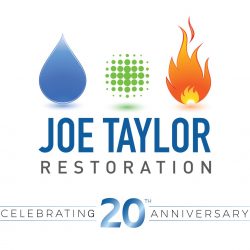Sewage Damage Cleanup
Date
Friday, November 9, 2018
 In any typical water damage situation, one of the most important questions to answer is: What is the quality of the intruding water? The Institute of Inspection Cleaning and Restoration Certification (IICRC) has defined the different types of intruding water and divided them into three categories. The worst of these is Category 3 Water, or “black water.” As its name indicates, this water is grossly unsanitary, containing harmful fungi, bacteria, viruses and parasites, and has the potential to cause extreme discomfort or illness to all those who come in contact with it. That said, it is obvious that sewage is part of this category.
In any typical water damage situation, one of the most important questions to answer is: What is the quality of the intruding water? The Institute of Inspection Cleaning and Restoration Certification (IICRC) has defined the different types of intruding water and divided them into three categories. The worst of these is Category 3 Water, or “black water.” As its name indicates, this water is grossly unsanitary, containing harmful fungi, bacteria, viruses and parasites, and has the potential to cause extreme discomfort or illness to all those who come in contact with it. That said, it is obvious that sewage is part of this category.
Sewage: The Gross and Disease Factors
Let’s be honest. Most of us prefer never to use a port-a-potty, unless absolutely necessary, for fear we would come in contact with sewage of any kind. So the idea that our homes or business would be flooded with sewage easily moves to the top of the list when it comes to property owners’ worst nightmares. Sewage is disgusting. Exposure to it is dangerous to all people, but particularly for those with weakened immune systems, including anyone under two or over 60, those who are pregnant, ill, recovering from surgery, on prescription drugs or chemotherapy, or have been diagnosed with AIDS.
Sewage and Property Damage
But in addition to the gross factor and the disease factor, sewage can cause extreme property damage and be expensive to clean up. That said, it is essential that you, as the property owner, are fully aware of what is covered by your insurance policy. Talk to your insurance agent. Begin with the knowledge that most policies will either not cover sewage damage cleanup, or will cover only a limited amount or in limited circumstances. When you speak to your agent about this, they should be able to tell you what you do or do not have, and how much is available, if any. If you are told you have coverage, ask where in your policy that benefit is located, or have the agent give you something in writing explaining your coverage.
What to Do if Sewage Invades Your Home or Business
Ideally, everyone would avoid contact with sewage under all circumstances. However, if the nightmare becomes reality and you find yourself faced with Category 3 water damage as a result of a sewage backup in your home or business, there are a few important things you should know:
- According to the IICRC, It is not safe to stay in a building that is flooded with sewage unless the contaminated area can be completely sealed off and placed under controlled air flow to prevent cross-contamination.
- Only the most highly trained professionals, experienced in dealing with biohazards, should be employed for sewage damage cleanup. Technicians will see to it that highly absorbent sewage-saturated materials, such as carpet, pad, upholstery, and even drywall and insulation are contained and disposed of properly. The health risks are too great if any of these materials are dried in place and cleaned only.
- After disposal and appropriate sewage damage cleanup has taken place, you can employ a “third party” indoor environmental professional to provide post-remediation verification, or “clearance testing,” to ensure that your home or building is safe to re-occupy.
Joe Taylor Restoration has over fifteen years of experience dealing with all types of water damage, including Category 3 water and sewage damage cleanup. We are prepared to handle even the worst sewage situations in your home or business. If you are faced with “black water,” do not hesitate, call Joe Taylor Restoration for the expertise you need in a rather icky situation.

